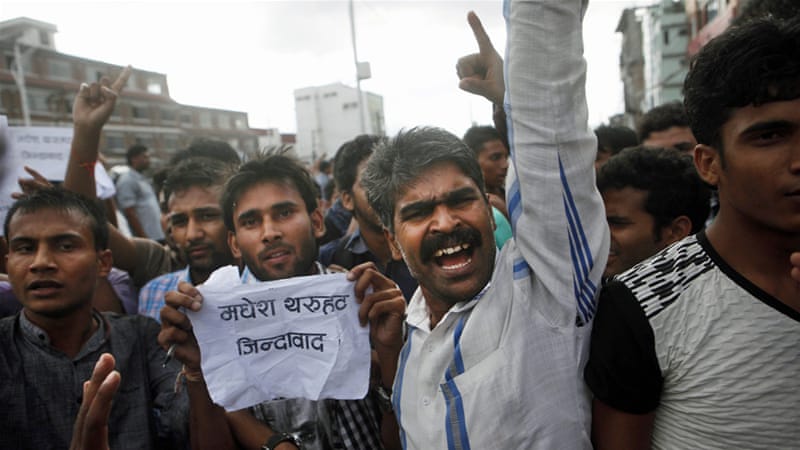100 day of the Madhesi-Tharu mass movement
Week [23-29 November]

– The struggle, which began in mid-August to prevent a ‘discriminatory constitution’, has transitioned into seeking substantial amendments in the statute and revision of federal boundaries once it was promulgated.
– Madhesis complain that the Constitution compromises the architecture of political representation, affirmative action, federalism, and citizenship. It shrinks the number of constituencies in the Tarai; it reduces the share of proportional representation component of the electoral system which had inbuilt quotas for excluded groups; it envisages that provinces would send an equal number of representatives to the Upper House rather than base representation from states on population.
All of this would erode Madhesi political strength. It dilutes the principle of reservation. And it gerrymanders the federal boundaries in a way where 12 out of the 20 districts in the plains are merged with the hills — the Madhes-dominated province in the eastern Tarai is left resource-deprived, and Tharus are reduced to a political minority in the west.
-The Madhesi anger is not just about the content of the Constitution, it is about the fact that the bigger parties rammed through a constitution despite the boycott of Madhesi forces and made little effort to engage with them. Add to this the background where Madhesis have always felt stripped of dignity and of being treated as ‘outsiders’ and it adds to a potent mix of sentiments, driving alienation.
– Nepal government has termed it an undeclared Indian blockade, while Delhi said the problem erupted because of internal protests in Nepal.
– There is now a deadlock. Kathmandu’s establishment does not want to budge — with Oli calculating this is making him a ‘nationalist hero’.
